

Architect Yong Ju Lee grew up in Daedeok Science Town in South Korea. All the dads, including his own, worked at the research and development institutes clustered there. All the families lived in the employee housing.
For a high-tech town, it was rather suburban; the small houses and nondescript, low-rise buildings were surrounded by green hills and rice fields. It took an hour on the bus to get into downtown Daejeon.
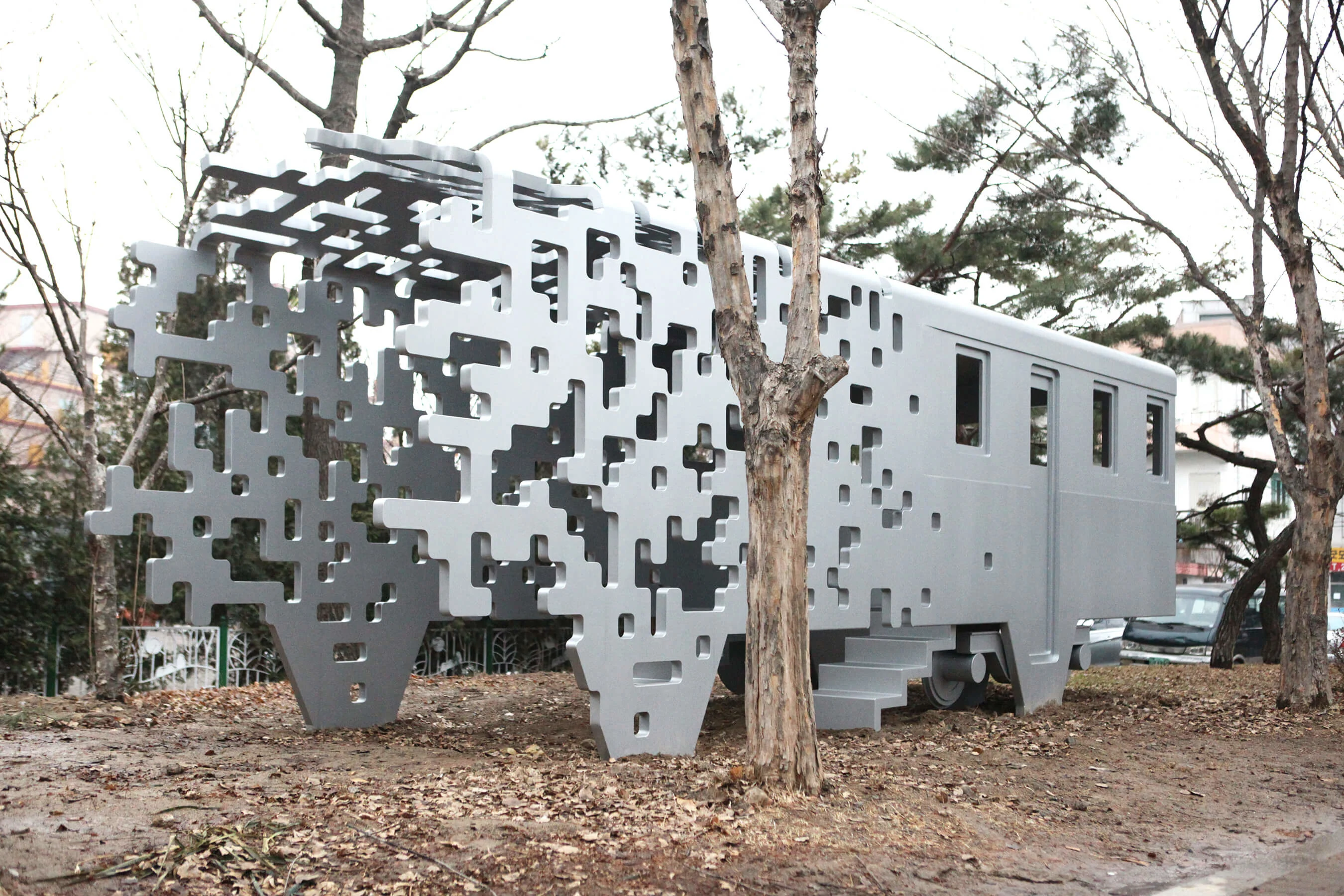
“The reaction against this quiet life possibly made me pursue something visually stimulating or radical,” Yong Ju says.
Context is a core pillar of architecture. Everything you create should either work with or against its environment. Yong Ju embraces the latter and his eye-catching designs for buildings, pavilions and public installations stand in contrast to their surroundings. He wants to make people stop in their tracks and pull them from the stupor of their daily routines. “My wish is for people to experience unusual refreshment through my works, even if it's for a short moment.”
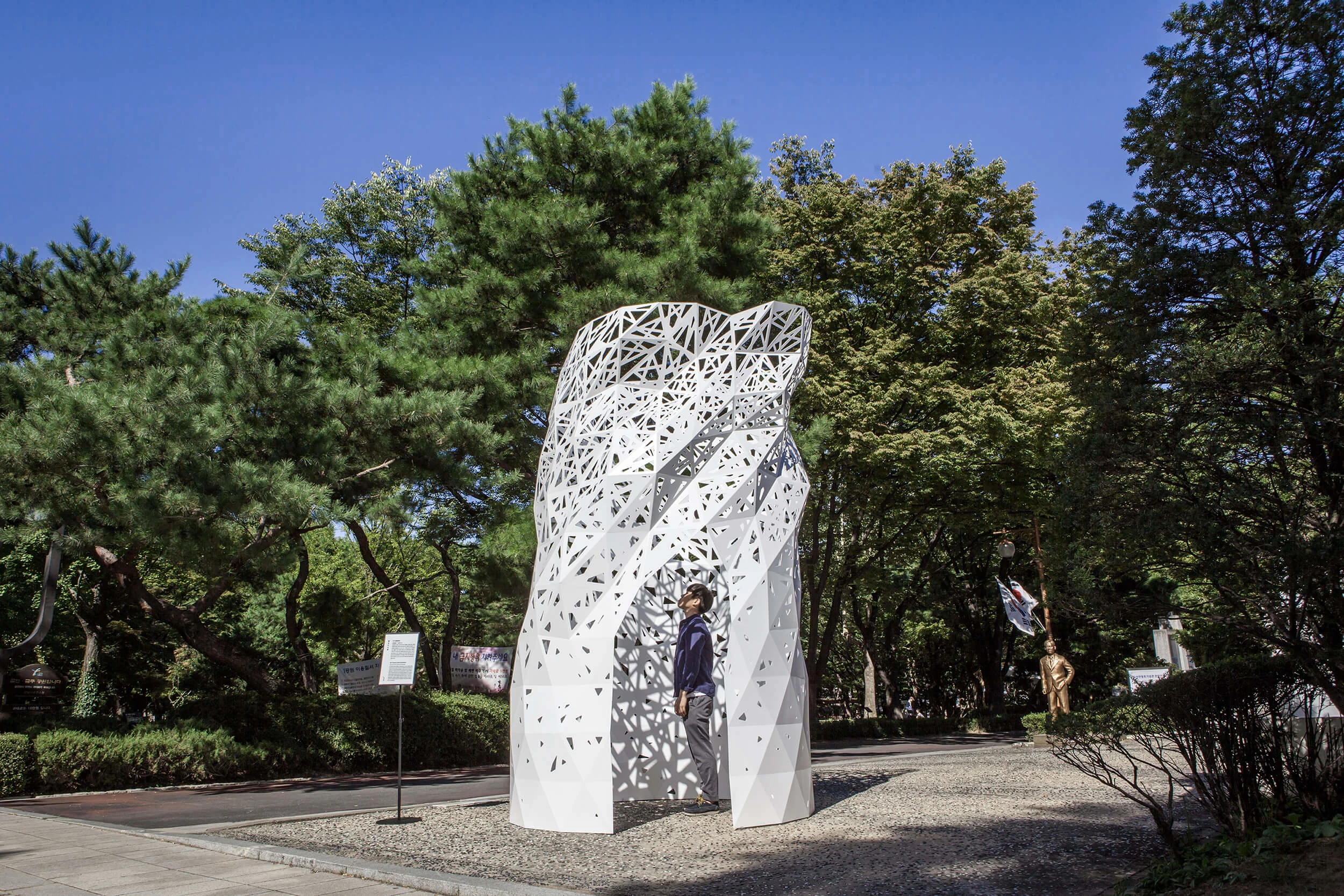

I intend to push both reality and imagination to an extreme level and for them to meet at a certain point.
During his childhood, Yong Ju stretched his imagination with sci-fi, and this interest has followed him into adulthood. He draws inspiration from David Cronenberg’s worlds, especially Videodrome (1983), and futuristic inventions like Daniel Simon’s Light Cycle from Tron Legacy (2010).
There’s an especially gory scene in the dystopian movie Elysium (2013) where Matt Damon’s character Max undergoes backstreet surgery to be fitted with a powered exoskeleton to enhance his strength and speed. Thick metal pins are drilled along his spine, which Yong Ju says directly influenced his award-winning skyscraper design, Vernacular Versatility. In his drawings, seven floors extend from the spine of the building which borrows its wooden structure and tiled roofs from traditional Korean houses called hanoks.
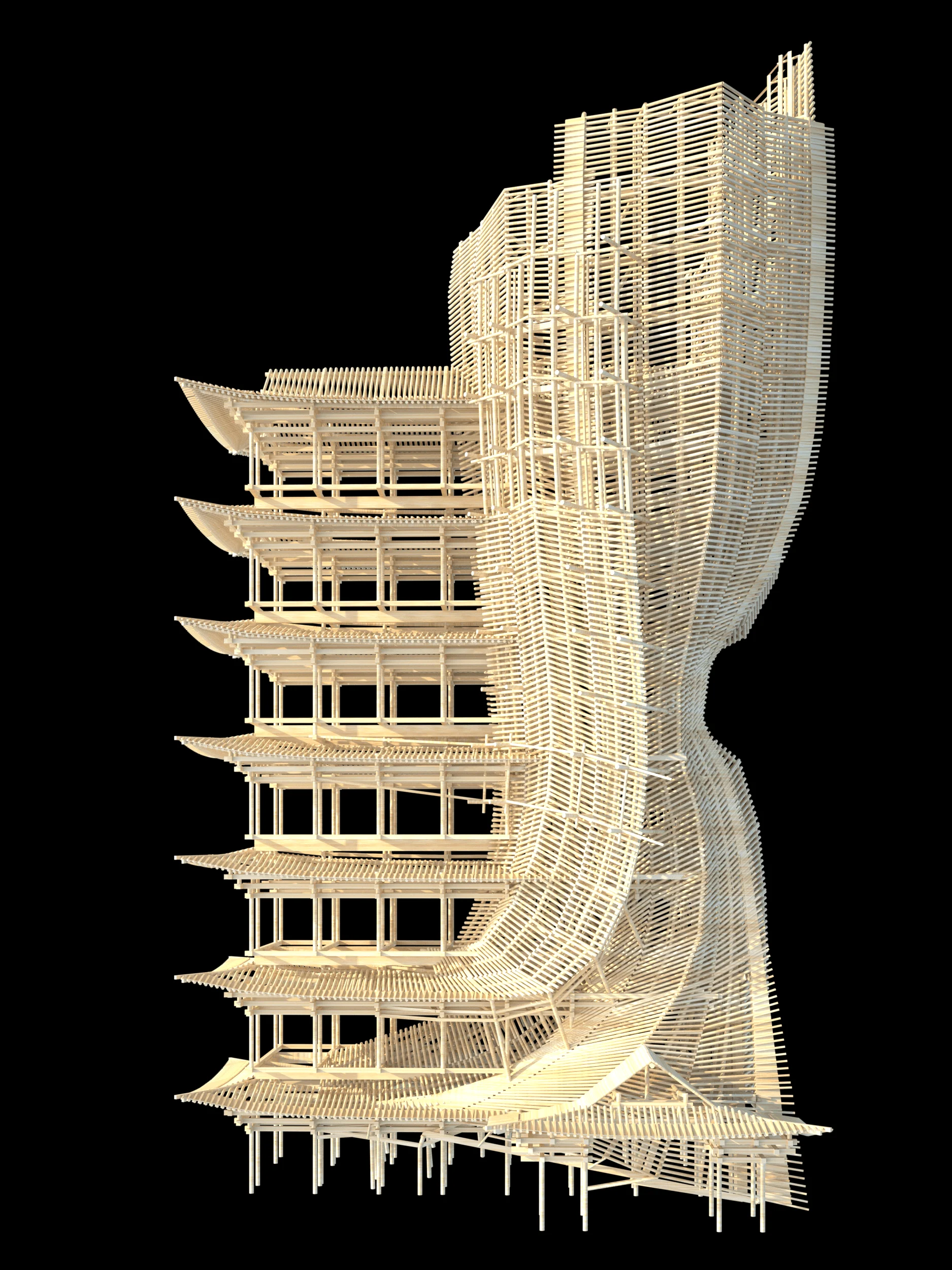
More recently he’s been watching Black Mirror on Netflix and reading fantasy writer Ken Liu. He enjoys being exposed to the unfamiliar. The boundary-pushing world-building of these genres influences his own creations. “I intend to push both reality – the basic rules of physics – and imagination to an extreme level and for them to meet at a certain point,” he says.
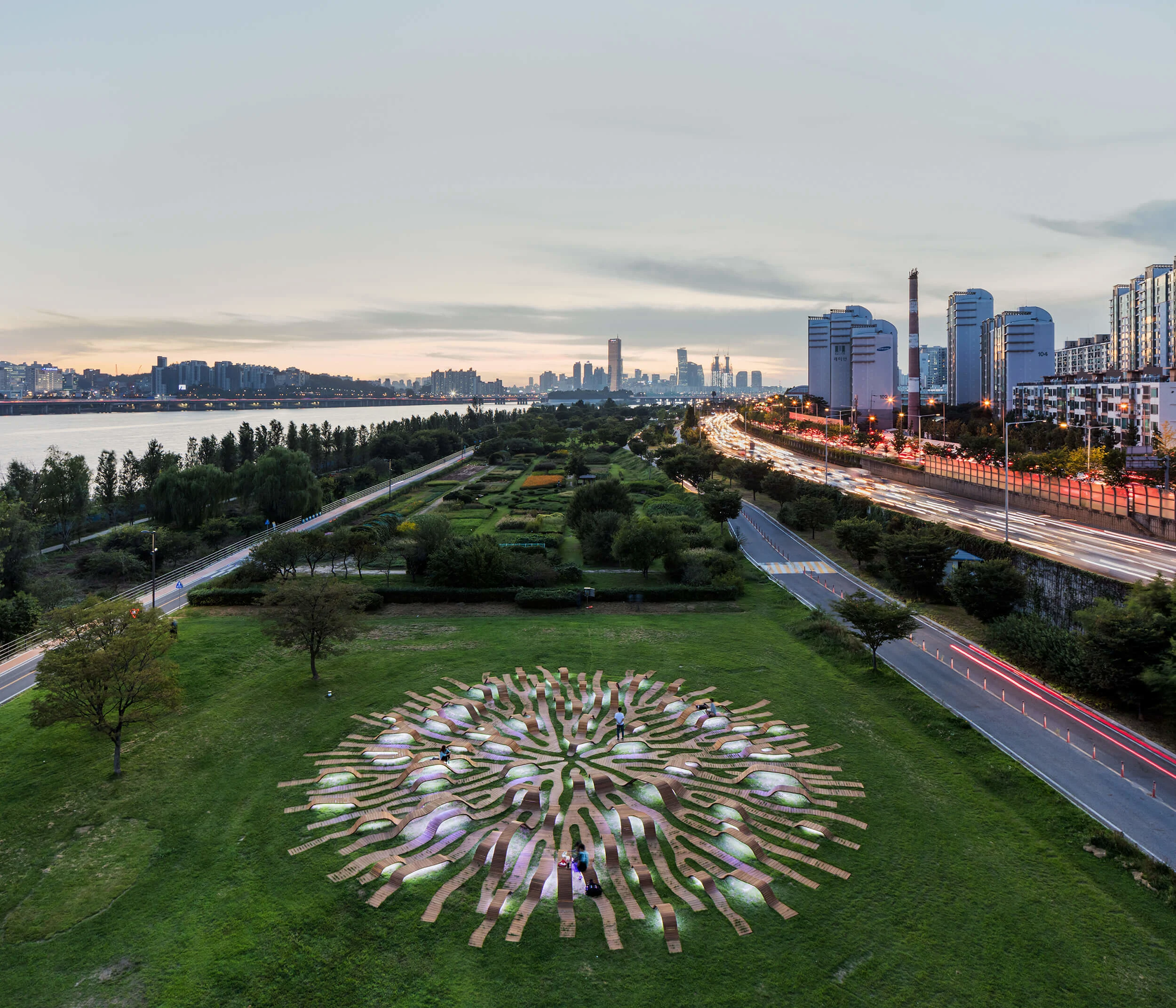
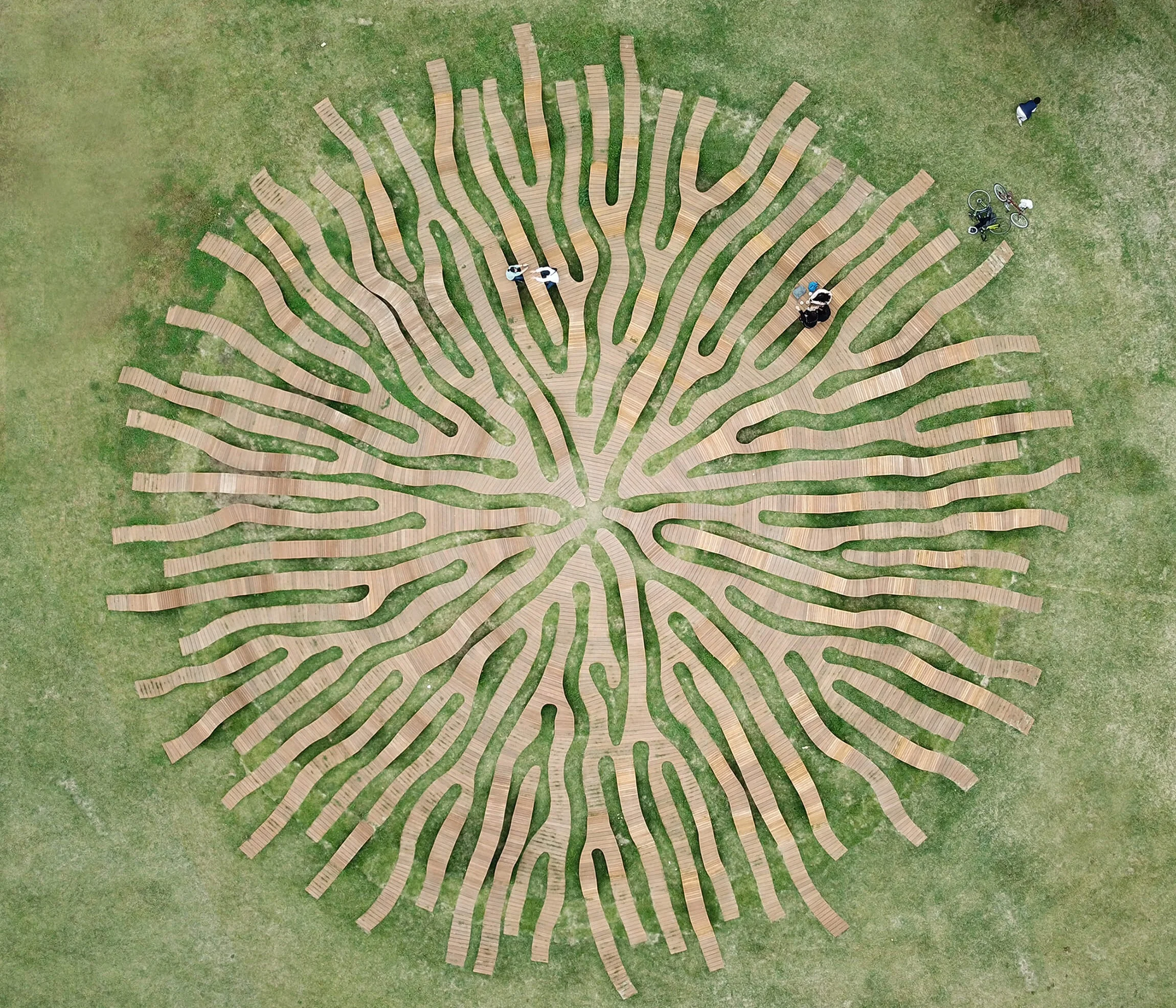
I believe all translation from invisible idea to tangibility can be thought of as architecture.
Take his Root Bench in Seoul’s Hangang Park which began as the winning proposal of the Hangang Art Competition. Yong Ju adapted the design to create an interactive piece of public furniture. Wooden paths like roots expand outwards from a central point, bubbling up organically from the grass to create bridges, benches and tables at different heights for park goers to use. The three-dimensional geometry, where the paths either rise from the grass or fuse with it, was created by a computer algorithm which visualizes the reaction-diffusion system in chemistry.
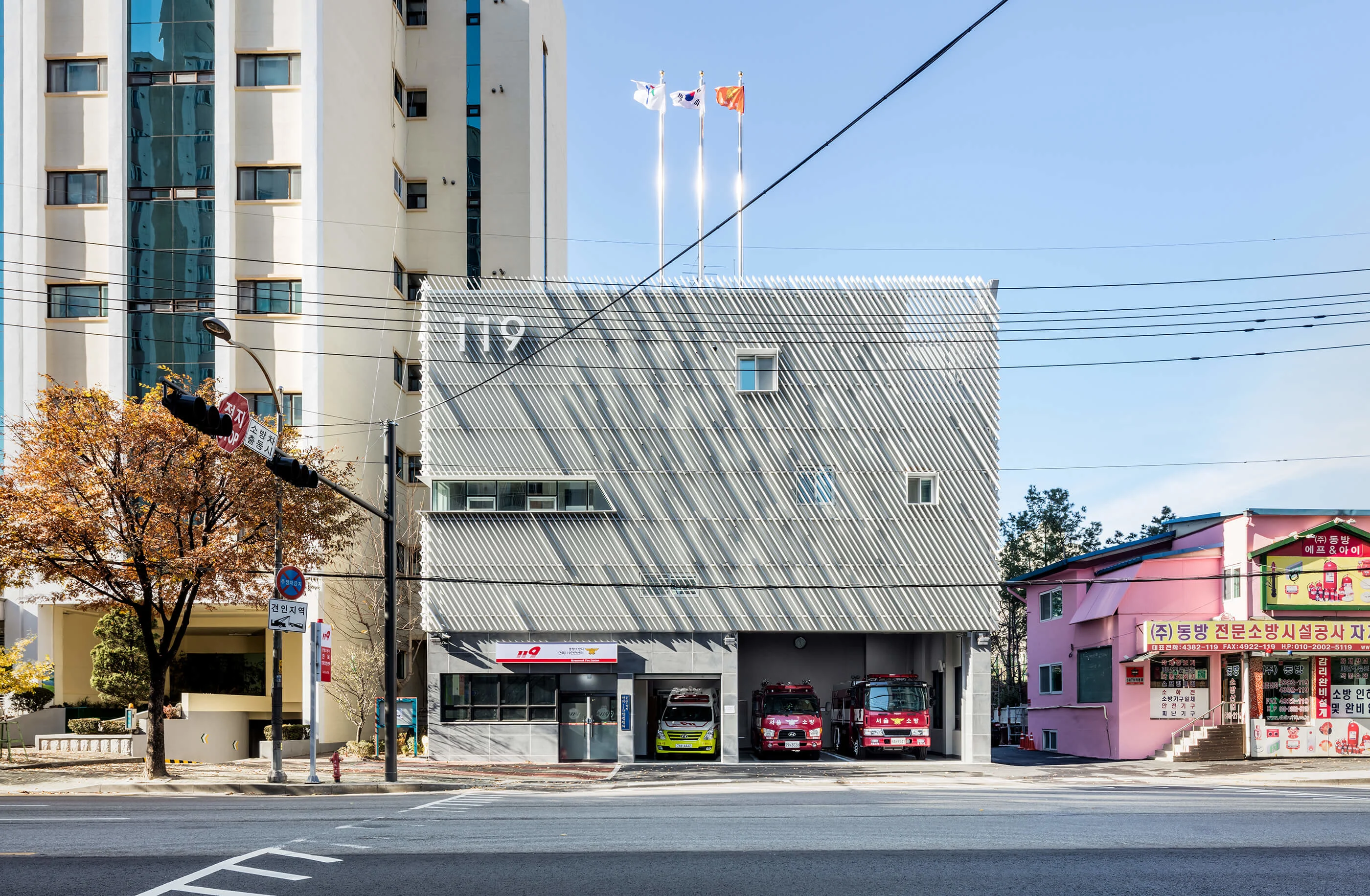
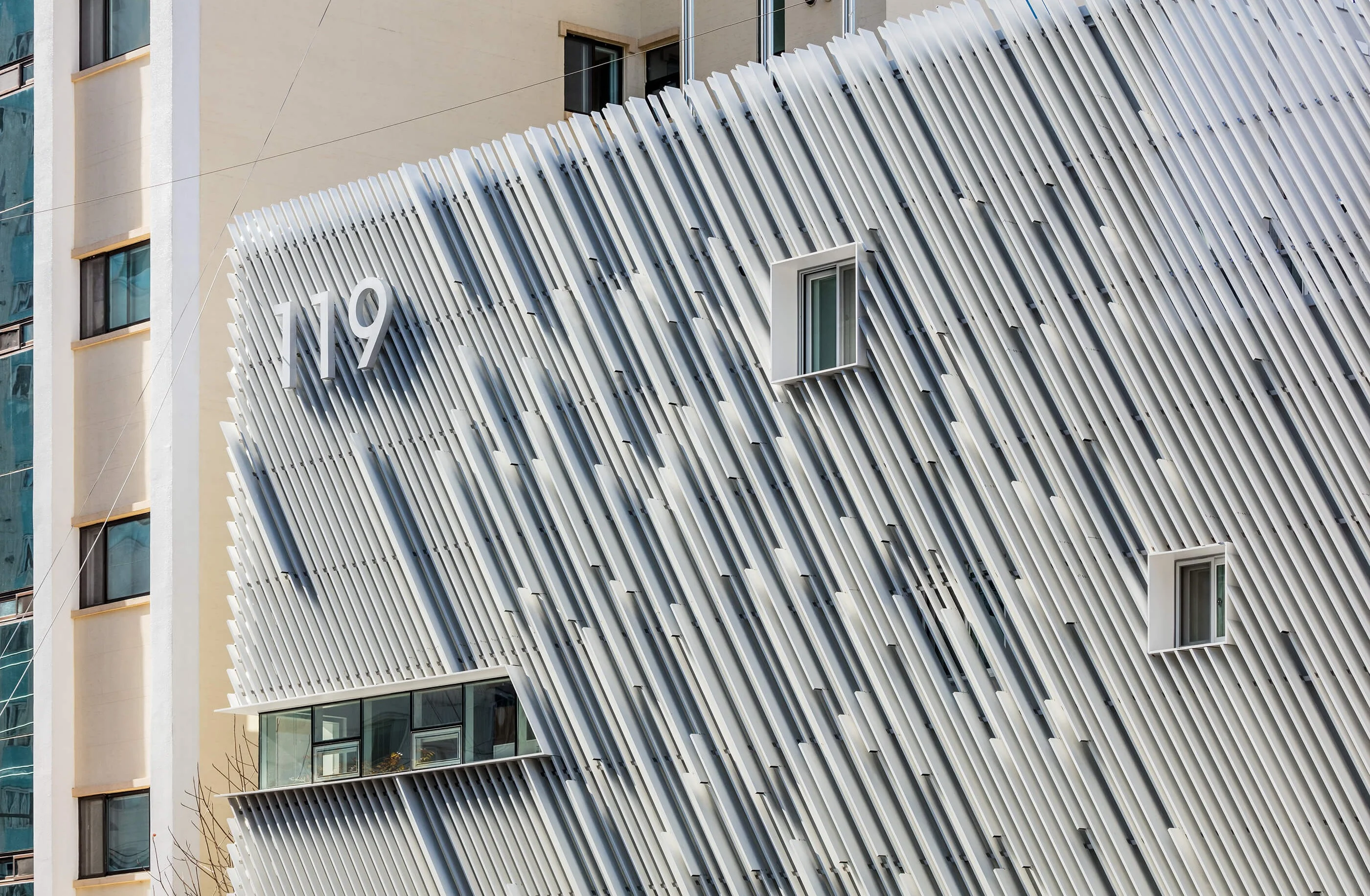
Yong Ju’s design for a fire station in Myeonmok, Seoul, also defies expectations. Instead of the usual red paint and bold signage we’re used to seeing on such buildings, he opted for a striking facade created with neutral-toned louvers arranged at different depths in a diagonal pattern across the building. Conceptually, the louvers symbolize the speed of the fire trucks but they’re also functional, moderating the temperature inside by blocking direct sunlight.
In some projects, Yong Ju plays the role of collaborator rather than author, which obviously requires a different skillset. For Filament Mind he joined forces with artist-designers Brian W. Brush and Noa Younse.. The piece sat in the lobby of the Teton County Library in Jackson, Wyoming, where 1,000 fibre optic cables (five miles in total) connected from a central tower to 1,000 key words on the adjacent walls.
Each key word corresponds to one of the categories used in the Dewey Decimal System . Whenever a visitor searches the library catalog from a computer in one of the state public libraries, the cable leading to the corresponding key word lights up. The glowing strands visualize the collective curiosities of the library visitors to create a stunning display.

Yong Ju moves seamlessly between art and architecture because he believes it’s all one and the same. “I believe all translation from invisible idea to tangibility can be thought of as architecture,” he says. Whether making data beautiful or re-imagining a sidewalk, he’s interested in making indifferent people perceive architecture differently. “People think of a luxurious house as architecture,” he says, “But architecture is everywhere. I would like to awaken their interests in the spatial value all around them.”
Words by Alix-Rose Cowie.

